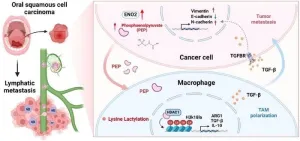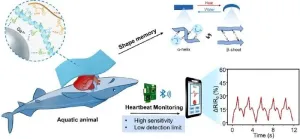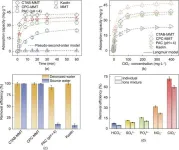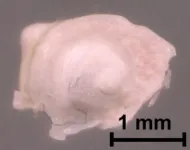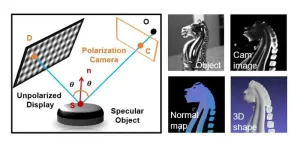(Press-News.org)
A recent study published in Engineering has shed new light on the mechanisms underlying the metastasis of head and neck squamous cell carcinoma (HNSCC). The research identified enolase 2 (ENO2), a crucial glycolytic enzyme, as a significant factor associated with lymphatic metastasis in HNSCC.
HNSCC is an aggressive cancer with a relatively low 5-year overall survival rate. Cervical lymph node metastasis is a major cause of cancer-related death in HNSCC patients, and effective therapies for metastatic HNSCC are currently lacking. Therefore, understanding the molecular mechanisms of HNSCC metastasis is of great significance.
The research team, through the integration of tumor databases, public datasets, and clinical relevance analysis, found that high ENO2 expression was positively correlated with lymph node (LN) metastasis in HNSCC. ENO2 overexpression promoted the migration and invasion of HNSCC cells both in vitro and in vivo, and this effect was mediated by the epithelial-mesenchymal (EMT) transition.
Further studies revealed that ENO2-mediated HNSCC metastasis was associated with M2 macrophage polarization. ENO2 regulated M2 macrophage polarization through its metabolite phosphoenolpyruvate (PEP). PEP could increase histone H3 lysine 18 lactylation (H3K18la) levels by inhibiting the catalytic activity of histone deacetylase 1 (HDAC1). The increased H3K18la enrichment in the promoter region of M2 macrophage-related genes promoted M2 macrophage polarization.
Moreover, PEP-mediated polarized macrophages enhanced the EMT and migration of HNSCC cells. The cytokine TGF-β released by polarized macrophages interacted with its receptor TGFβR1 on tumor cells, promoting EMT and migration, which may lead to tumor metastasis.
Importantly, pharmacological inhibition of ENO2 with POMHEX effectively reversed M2 macrophage polarization and inhibited HNSCC lymphatic metastasis in mouse models. This finding suggests that POMHEX could be a potential therapeutic approach for managing HNSCC metastasis.
This study elucidated the role of ENO2 in modulating macrophage polarization and contributing to HNSCC metastasis. It also revealed the mechanism by which ENO2-derived PEP regulates histone modification and macrophage polarization. These findings provide novel mechanistic insights into HNSCC lymphatic metastasis and offer potential therapeutic targets for metastatic HNSCC.
The paper “Cancer ENO2 Induces Histone Lactylation-Mediated M2 Macrophage Polarization and Facilitates Metastasis of Head and Neck Squamous Cell Carcinoma,” authored by henran Wang, Lin Tan, Maohua Huang, Yuning Lin, Minxiang Cai, Lijuan Deng, Xinpeng Hu, Shenghui Qiu, Xiaoting Chen, Yiming Zhang, Xiaomei Luo, Changzheng Shi, Minfeng Chen, Wencai Ye, Junqiu Zhang, Dongmei Zhang, Xiangning Liu. Full text of the open access paper: https://doi.org/10.1016/j.eng.2024.11.036. For more information about the Engineering, follow us on X (https://twitter.com/EngineeringJrnl) & like us on Facebook (https://www.facebook.com/EngineeringJrnl).
END
In a recent development published in Engineering, researchers have introduced a novel hybrid keratin (KE) hydrogel integrated with liquid metal (LM), offering new possibilities for monitoring the health of marine inhabitants. This innovation addresses the limitations of traditional wearable electronics in terms of biocompatibility, mechanical strength, and conductivity.
Monitoring the health and migration of marine organisms is crucial for maintaining the balance of marine ecosystems, advancing climate change studies, and safeguarding human health. However, developing sensors for marine organisms is challenging due to the complex ...
To encourage scientists to speak up when people misuse science to serve political agendas, biology professor Mark Peifer of the University of North Carolina at Chapel Hill argues that eugenics should be included in college genetics curriculums. In an opinion paper publishing March 27 in the Cell Press journal Trends in Genetics, Peifer explains how he incorporated a discussion of eugenics into his molecular genetics course last year and why understanding the history of the field is critical for up-and-coming scientists.
“Eugenics is not dead but continues to influence science and policy today,” writes Peifer ...
About The Study: The results of this cohort study suggest that semaglutide use was associated with an increased risk of nonarteritic anterior ischemic optic neuropathy in patients with diabetes. However, the study’s retrospective design presents limitations, as it can only infer associations rather than establish causality; further studies are needed.
Corresponding Authors: To contact the corresponding authors, email Chun-Ju Lin, MD (doctoraga@gmail.com) and James Cheng-Chung ...
About The Study: Daily screen use was associated with later bedtimes and approximately 50 minutes less sleep each week in this study. Associations were greater among those with evening chronotypes, who are at risk for poor sleep due to social jetlag (i.e., misalignment between circadian rhythms and social commitments). These findings confirm disruptions to sleep from electronic screens are not limited to children and adolescents. Further work is needed to understand the best mechanisms for intervention.
Corresponding Author: To ...
About The Study: In this pooled cross-sectional study, findings suggest that state legislatures that elected to increase their state minimum wage may have also improved state food security rates among households with children at risk for economic hardship. The findings provide policymakers with actionable evidence to consider in setting minimum wages that could reduce the burden of food insecurity among U.S. children and families.
Corresponding Author: To contact the corresponding author, Megan R. Winkler, PhD, RN, email megan.winkler@emory.edu.
To ...
A study published in Engineering introduces an innovative approach to address the issue of perchlorate (ClO4−) contamination in water. Perchlorate is a harmful oxo-anion found in aquatic environments. It can enter the human body through drinking water and inhibit iodine absorption in the thyroid gland, potentially causing various thyroid-related diseases. Given the strict perchlorate limits in drinking water worldwide, such as 70 μg/L in China and 15 μg/L in the United States, developing efficient methods for its removal is crucial.
The research team, hailing from Hunan University and Shanghai Jiao Tong University, prepared an adsorbent ...
WASHINGTON — For the first time, researchers have shown that terahertz imaging can be used to visualize internal details of the mouse cochlea with micron-level spatial resolution. The non-invasive method could open new possibilities for diagnosing hearing loss and other ear-related conditions.
“Hearing relies on the cochlea, a spiral-shaped organ in the inner ear that converts sound waves into neural signals,” said research team leader Kazunori Serita from Waseda University in Japan. “Although conventional imaging methods often struggle to visualize this organ’s fine details, ...
(WASHINGTON—March 27, 2025) — A machine learning model generated by a team from the European Society for Blood and Marrow Transplantation (EBMT) outperformed standard statistical models in identifying and stratifying transplant risk for patients with myelofibrosis, according to new research published today in Blood, the American Society of Hematology’s flagship journal.
“Although there are many models available to identify patients with high-risk myelofibrosis, we are still lacking ...
Accurate and robust 3D imaging of specular, or mirror-like, surfaces is crucial in fields such as industrial inspection, medical imaging, virtual reality and cultural heritage preservation. Yet anyone who has visited a house of mirrors at an amusement park knows how difficult it is to judge the shape and distance of reflective objects.
This challenge also persists in science and engineering, where the accurate 3D imaging of specular surfaces has long been a focus in both optical metrology and computer vision research. While specialized techniques ...
Noted Maya archaeologist Julie Hoggarth, Ph.D., associate professor of anthropology at Baylor University, has been elected to the rank of AAAS Fellow, a lifetime honor announced today by the Council of the American Association for the Advancement of Science (AAAS), the world’s largest general scientific society and publisher of the Science family of journals.
Hoggarth is among the 471 scientists, engineers and innovators who have been elected 2024 Fellows for their scientifically and socially distinguished achievements throughout their careers. The new Fellow class hails from academic institutions, ...
